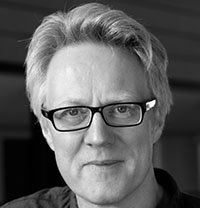By Des Higham
More than half of us live or work in a city. As our digital footprints become more visible, and machine-to-machine communication more commonplace, cities can become “Living Labs.” Researchers, governments and commercial organisations interested in issues such as energy, transport, crime, wellbeing, marketing, privacy and ethics are beginning to map out this new territory, and Future Cities/Smart Cities/Digital Cities is high on the agenda of many research funding agencies.
Glasgow recently became the UK’s flagship Smart Demonstrator City, receiving £24M of government cash to “allow public, private and academic sectors to combine expertise and use cutting-edge technology to enhance day-to-day life in the city”. Within this project, the University of Strathclyde’s Institute for Future Cities will develop a City Observatory, where data streams will be collected, analysed, acted upon and made openly available. A temporary pop-up version of the City Observatory, opened to coincide with the 2014 Commonwealth Games, has attracted 8,000 visitors in two months. Members of the public have been particularly keen to interact with a set of maps (or a three-dimensional tensor for those of us with a linear algebra view of the world) that overlays city features such as house prices, drug misuse and population density. Refer to the figure below.
Multi-layered visualization of features across the city of Glasgow. Credit: c.LUSTlab/Institute for Future Cities, University of Strathclyde. Reproduced with permission.
The Future Cities space can throw up all sorts of fascinating and novel challenges to mathematicians and statisticians; from clever, scalable data analytics that generates new insight to calibrated models that can be used to experiment and predict. I can understand that the gizmos and the applications are easier to sell (I recently attended a meeting on the theme of opportunities for mathematicians in the field of big data where even a sympathetic and on-page group of speakers and audience members were inclined to veer towards the pay-offs: mathematics is often the first casualty when we are trying to justify public spending). However, there is a strong case to be made for mathematical scientists to stake their claim—smart appliances, wearable devices, lifestyle-changing apps and silver jump-suits with built-in jet-packs will come and go as the technologies evolve—but effective computational methods and insightful models based on testable assumptions are likely to have a much longer shelf-life. A mathematical toolbox for Future Cities can survive and grow across the 1.0, 1.1, 1.2…. incarnations of the underlying kit.
A recent book The New Science of Cities by Michael Batty (MIT Press, 2013), with its “networks and flows” viewpoint, is a good place for mathematically-oriented readers to learn about what is currently being measured and modelled. The UK’s government-funded Future Cities Catapult “where cities, businesses and universities come together to develop solutions to the future needs of our cities” is a useful source of news, especially via their Twitter feed at @futurecitiescat. A longer riff on the math-future cities theme that I have co-authored with Peter Grindrod (Oxford) and Robert MacKay (Warwick) will appear in the November issue of SIAM News, and readers are also invited to join in digitially via the LinkedIn group MSSC: Mathematical Sciences for Smart Cities.
 | Des Higham is a professor in the Department of Mathematics and Statistics at the University of Strathclyde, Glasgow, and serves as section editor for the Survey & Review section of SIAM Review. He also sits on the Advisory Board of the Institute for Future Cities at the University of Strathclyde. |